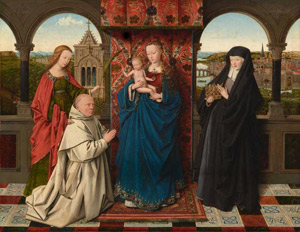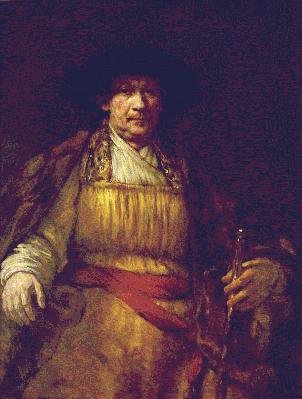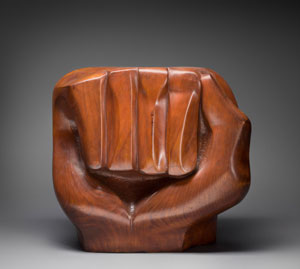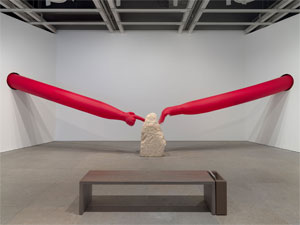6.2.25 — Nostalgia for What?
The Queens Museum does not “do” nostalgia, at least not willingly or well. It is too busy making up for its past, with artists from the Dominican community in Corona and the greater diversity of Queens. Besides, it hardly has to. Those of a certain age will remember the building as the New York City pavilion of the 1964 World’s Fair all the same—with the Unisphere, still the symbol of “Peace Through Understanding,” out front.
Ready for more of a decade long on nostalgia and, simultaneously, hopes for the future? I look next time at “Pirouette,” a show of modern design at MoMA, as part of a longer review and my latest upload, but for today the course of the World’s Fair. The elevated platforms of the former New York State pavilion still rise close by. So what if now, after sixty years, an exhibition honors the World’s Fair as “A Billion Dollar Dream,” 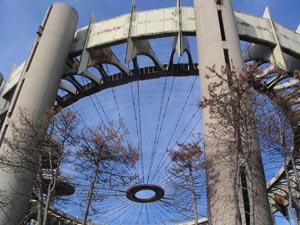 through July 13? The fair was a titanic undertaking, marred by corruptions, with a cost to the city of at least $60 million. It was the dream of a lifetime for many, but just whom?
through July 13? The fair was a titanic undertaking, marred by corruptions, with a cost to the city of at least $60 million. It was the dream of a lifetime for many, but just whom?
The museum is overdue to build an audience, and this could have been the occasion. For opening day, it served Belgian waffles, an attraction of the fair, to all comers. Yet it is still the same low-budget operation struggling for relevance, and it cannot shake off its ambivalence. It serves up neither a celebration nor a critique. It bows to both as best it can, but with a long way to go. For now, too little is left after the waffles have gone.
Those too young to remember the fair can enjoy a model city as if it were made just for them—a literal model city, the fair’s scale model of New York. As you search for your block in a half-darkened room, you can feel yourself a part of a more optimistic era. Everyone belongs, it says, but not everyone gets the message. Charisse Pearlina Weston used her 2023 exhibit at the museum to decry the fair as an indulgence, taking over the park from its neighbors. One can feel their isolation, crossing to the museum over an eight-lane highway. One can feel it, too, in an art museum that never has caught on or in the park in winter, all but deserted apart from a brave jogger or two.
Can it recreate the wonder that a child like me once felt? It has maps of almost the entire park, in two and three dimensions, but then there is nowhere to go. Photos show the entrance to an elevated rail snaking through the fair’s density of pavilions to the tune of “It’s a Small World After All.” Here there is only silence. If pavilions for emerging nations stressed local cultures or their entrance to the world stage, one would never know it. The sole local costumes are uniforms for the fair’s admissions counter.
It asks to place the fair in its time, but only so far. It was automobile friendly, like Robert Moses, the ruthless urban planner who also organized the fair (a curious omission for the museum), and each of the leading auto makers had a pavilion. So did the ugly temptations of consumer culture and “The American Interior”? Will the show have room for at least a sample of Formica, if not an entire kitchen? Do not get your hopes up. A photo pictures laborers at work, including women, but surely someone had to build all this, and the Fair Pay Act of 1963 did not single out New York.
One can sympathize with the show’s ambivalence. The times had all the optimism of a new international order, but all the fears of the Cold War that no amount of show business could dispel. The fair brought with it the hopes of the civil-rights movement, but also protests from the Congress of Racial Equality. The 1939 World’s Fair was about the arrival of modernity. That brutal eight-lane highway connecting the city’s roads and bridges fell into place just in time. The 1964 World’s Fair was about what happens when modernity becomes the norm.
The passage from industrial waste to a park had foundered before. Flushing Meadow was still what F. Scott Fitzgerald called a valley of Ashes” and Robert Caro, in his biography of Moses, “foothills of filth,” but change was on its way. Not everyone could afford a car, but the fair fostered them—and automobile culture still rules in the city’s white outer-borough neighborhoods. The fair itself attracted far more than wealth as well, like my father and me. A year later, a ticket to the Beatles at nearby Shea Stadium cost just was $5.50. I only wish I could have gone.
The fair even had a place for art. Michelangelo’s Pietá came all the way from Rome to the Vatican pavilion, although the museum does not deign to mention it . Art is itself about felt experience, not amateur sociology. Maybe a little more such experience could at last put inequality on America’s agenda and the museum on a New Yorker’s map. The two world’s fairs were twenty-five years apart, and none has come since. There is a whole world left to bring alive.
Read more, now in a feature-length article on this site.
